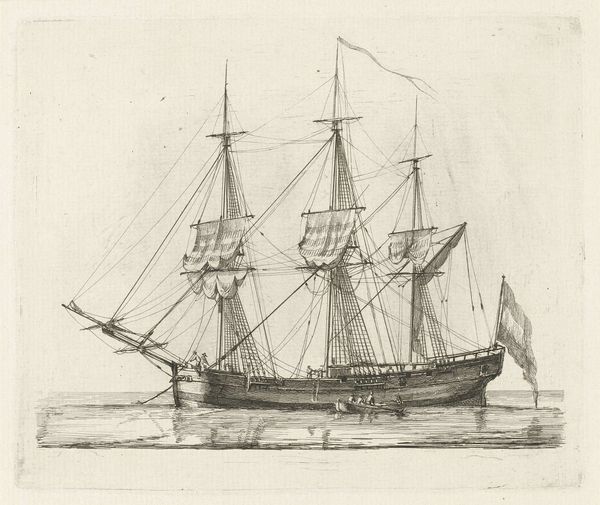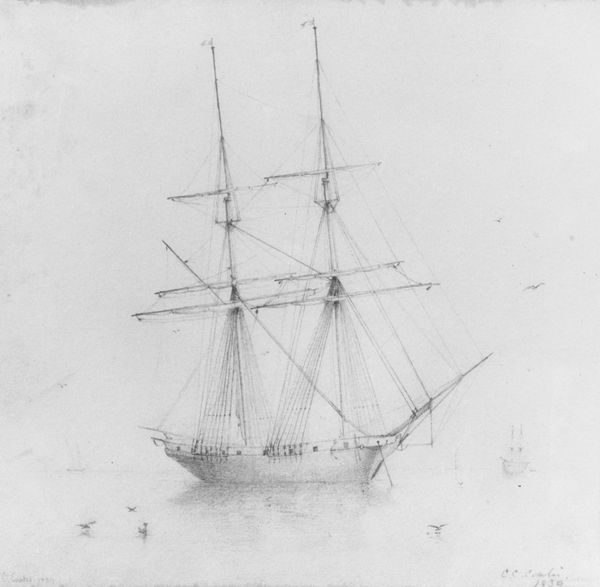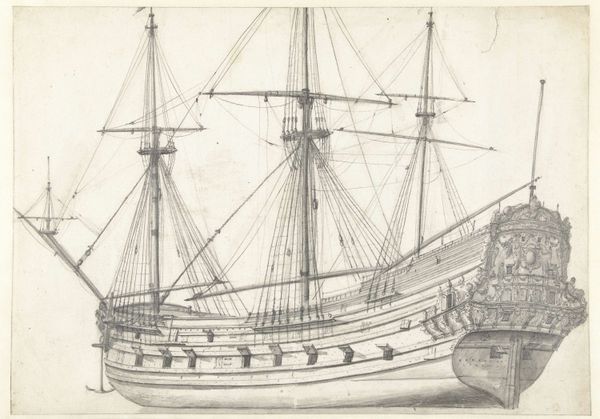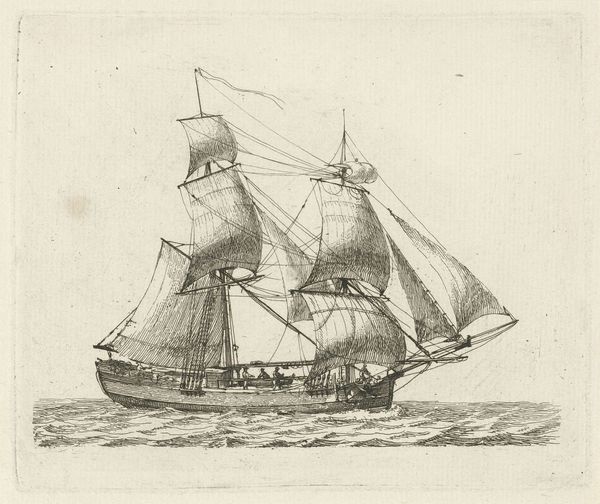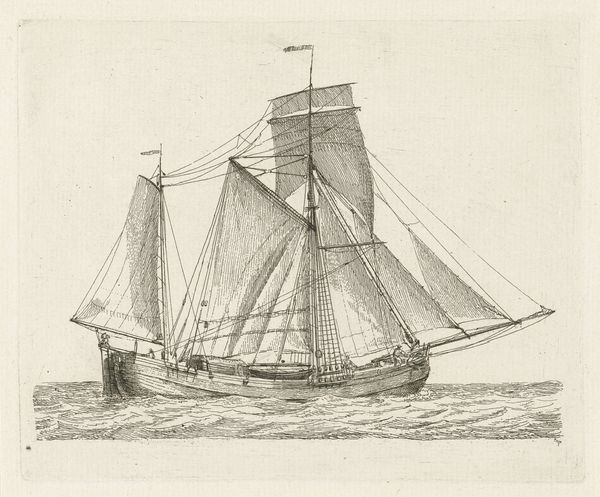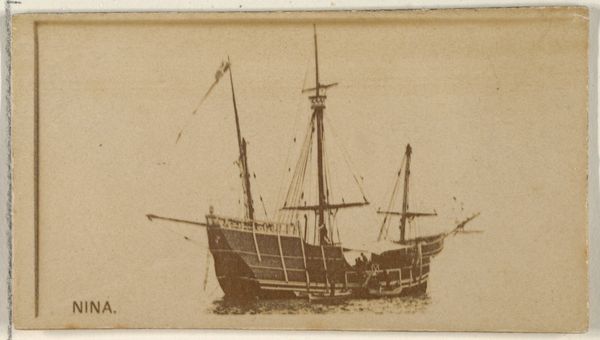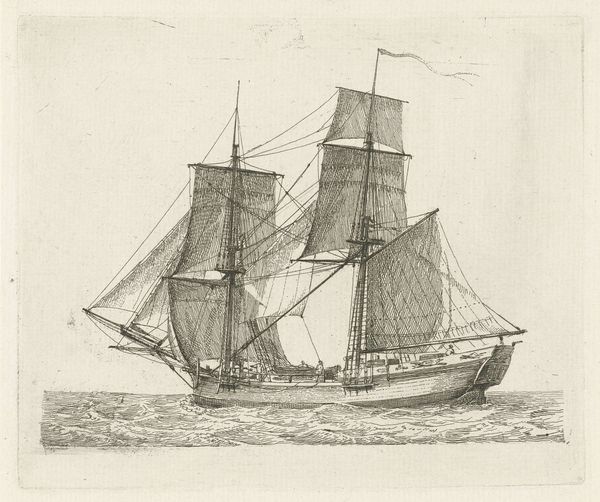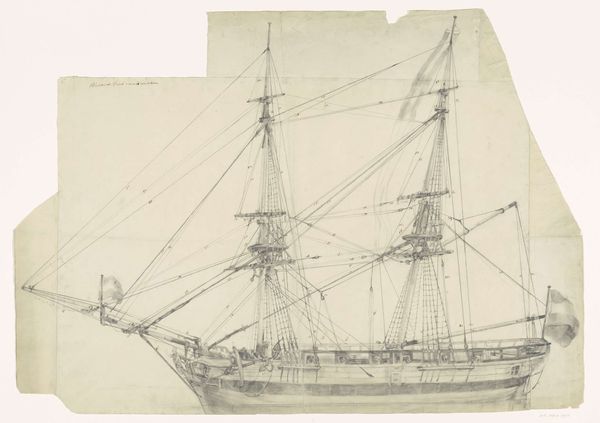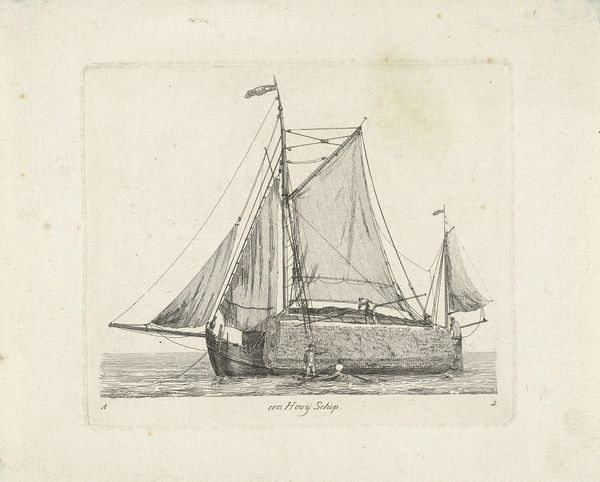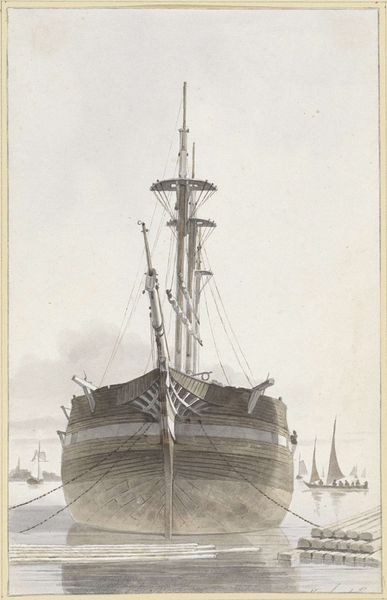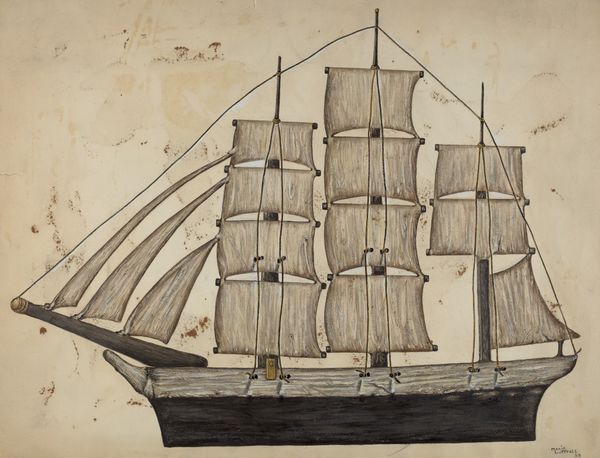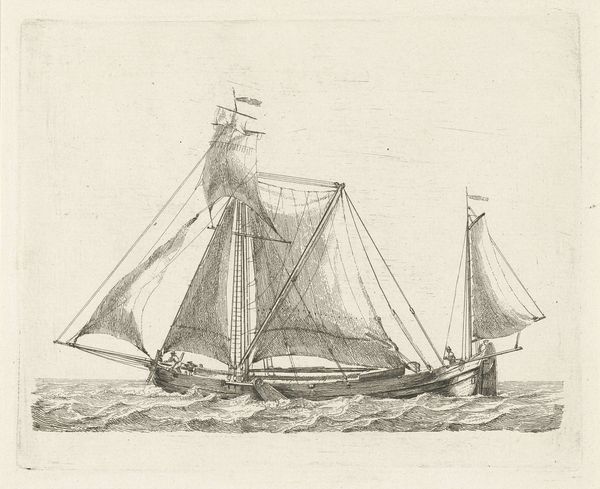
Dimensions: 14 x 9 15/16 in. (35.6 x 25.2 cm)
Copyright: Public Domain
Editor: Here we have Andrew Fisher Bunner's "Charcoal Boat, Venice" from 1877, currently residing at the Metropolitan Museum of Art. It's a charcoal drawing, and what strikes me most is its texture; you can almost feel the aged wood and ropes. What story do you think the artist is trying to tell, especially with the focus on such ordinary materials? Curator: This drawing gives us a valuable lens through which to view 19th-century artistic labor. Look closely at the charcoal itself; it's a relatively inexpensive material. Bunner chooses it not just for aesthetic reasons, but likely because it reflects the everyday reality of Venetian laborers and their relationship to the water. How does the detail of the hull speak to the boat-building process as labor? Editor: It's interesting that you point out the charcoal's relation to labor, the very medium mimics the textures and even perhaps the dust of the work itself. And you're right, there is incredible detail; each plank of wood looks individually rendered. But does focusing on the "everyday" risk romanticizing a potentially difficult existence? Curator: That's a great question. Perhaps. But isn't romanticism itself a product, consumed by an art market eager for picturesque views? The work complicates such straightforward interpretations. Consider Venice at this time – a site of immense tourism, an industry reshaping the city and its inhabitants' lives. Where do we draw the line between documentation, exploitation, and idealization in works such as this? Editor: I never considered tourism itself as another "material" influencing the piece. So the drawing isn’t just *of* a boat, but about the broader economic and social forces at play in Venice at the time? Curator: Precisely. It encourages us to analyze the conditions of both its production and consumption. Bunner isn't just creating a pretty picture; he's engaging with the complexities of Venetian society through a specific material language. Editor: That definitely gives me a new perspective. It's amazing how focusing on the "stuff" of art can reveal so much about its cultural context. Curator: Exactly, art is never created in a void. Focusing on material offers insights into the intricate layers of social history embedded within artistic creations.
Comments
No comments
Be the first to comment and join the conversation on the ultimate creative platform.
